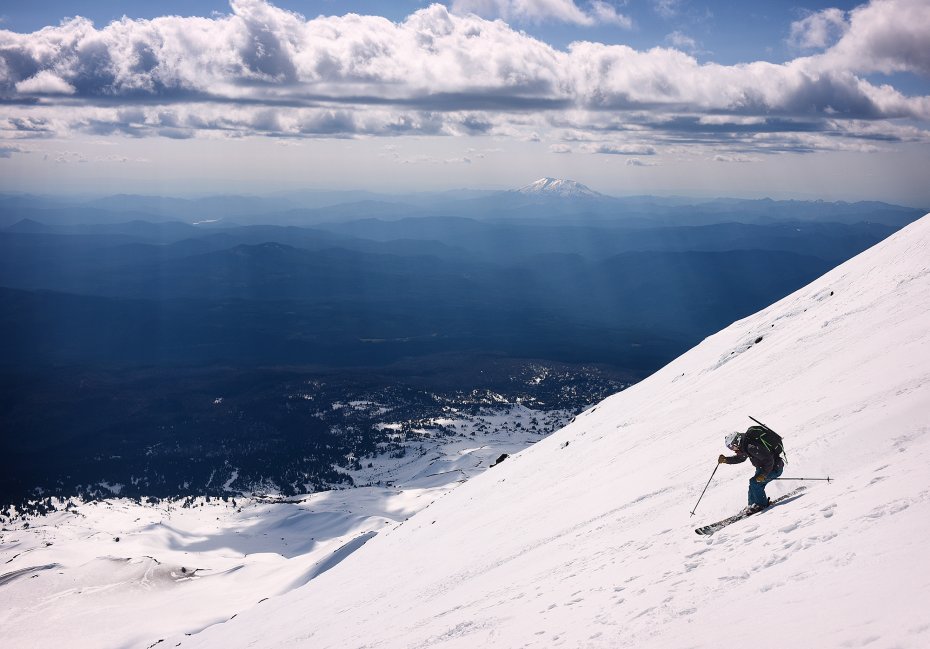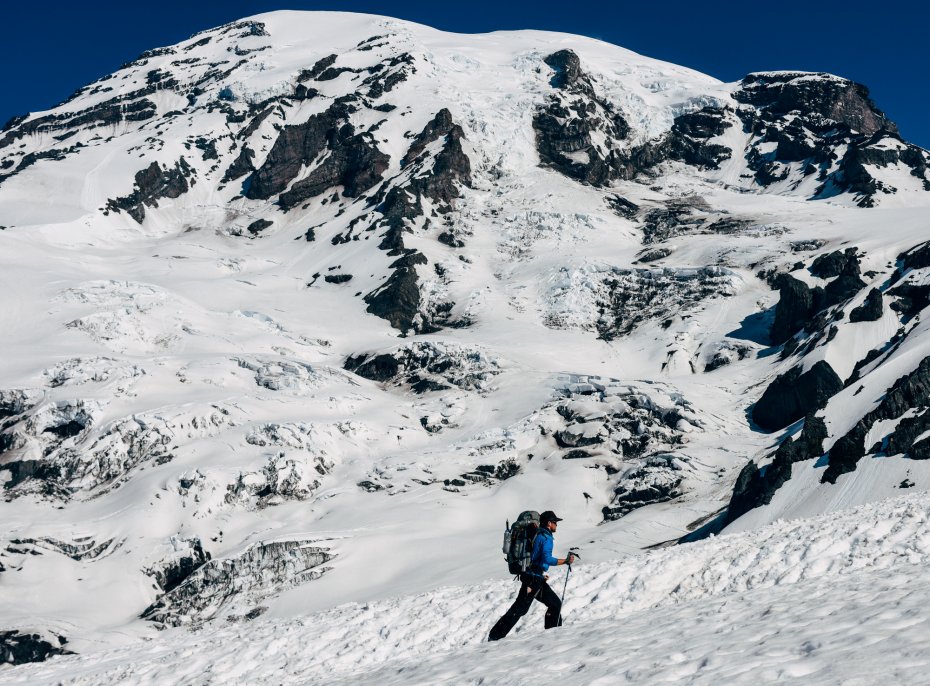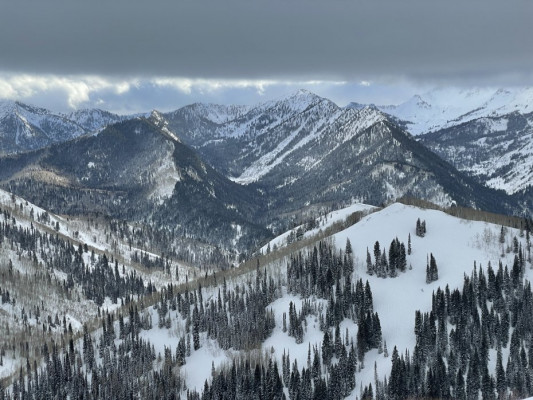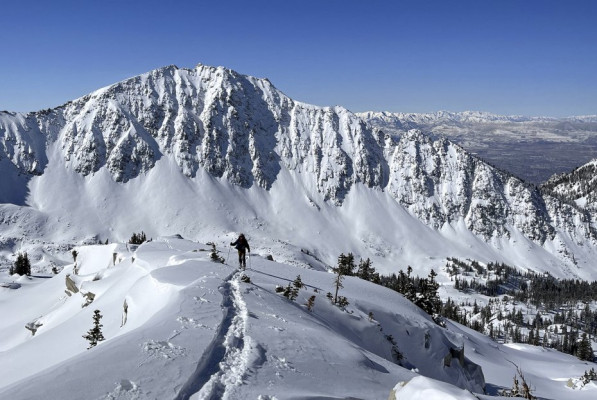4/7/2022 Volcano Season - Gear List and Staff Recommends
Volcano Season.
It’s an ambiguous, yet well understood, term for a pilgrimage that many North American backcountry skiers take part in every late spring as they flock to the Pacific Northwest’s prominent peaks. Those two words alone elicit thoughts of crampon spikes crunching on refrozen snow, navigating around spooky crevasses by headlamp, big vertical pushes, and most importantly, making turns on massive, seemingly endless fall lines. More often than not, the snow is delectable corn warmed to perfection by the bluebird sunny skies. Back at the trailhead, you’ll be exhausted, sunburned, and fully content.

As a backcountry ski shop, we often get customers asking us what gear they’ll need for their trip - whether it’s their first time or they’re looking to up their game. So with our collective experience, we put our heads together to make a gear recommendation list specific for this sacred time of the year. Obviously not every piece of required gear is listed, just the ones that are essential or we think will improve your time in the PNW.
Skinny Sticks!
We know you were looking for a reason to buy another set of skis so here it is! A dedicated spring touring set up, if you don’t already have one, will change your life. In short, spring skis are skinnier, shorter, and stiffer than your powder skis which makes them lightweight, better at edging, and more capable in firm and variable conditions. Last season, we really went down the rabbit hole and wrote an article elaborating on all of those reasons and even included our staff’s top picks. That said, we’d also like to note that the Elan Ripstick 88 is a worthy addition. Folks around here note that it’s simply fun to ski because it turns easily and has impressive edge hold.
The Pointy Bits
Now on to the exciting stuff - it is a mountaineering trip after all! On nearly every volcano you’re going to start ascending when the snow is soft as concrete so you’ll need tools to give you purchase and keep you upright. And unless you’re climbing rowdy, vertical lines, none of it needs to be heavy!
Crampons - The staff favorite, by far, are the Petzl Leopard Crampons. The aluminum construction keeps them featherweight and a cord replaces the traditional link bar to further reduce weight and bulk. Seriously, these things pack down tiny. And if your route does include some steep ice, opt for the Petzl Irvis Hybrid since they feature the same design but with durable steel front points.
Ski Crampons - You don’t always have to throw the skis on the pack when the snow is firm. Simply slide on some ski crampons and add some serious bite to your step! To be honest, there’s not much difference in the performance amongst models so we don’t have specific recommends. Just use this guide to find the right pair for your set up and enjoy!
Ice Axe - The idea is to ski back to the trailhead, not slide. So when things are steep, firm, and a touch dicey, an ice axe is the best tool to stop any uncontrolled falls from escalating into disaster. When using it just for self-arresting, there are plenty of stupid-light options. We prefer the CAMP Corsa Race Ice Axe because, well, it’s the lightest we carry at 188 grams. But if you’re going to actually be swinging the tool in hopes of placing a pick, like when climbing Rainier’s Kautz Glacier, you’re going to need the heft that comes with a proper ice tool, such as the Petzl Sum’tec.
Glacier Travel
Many of the classic routes on these volcanoes involve glacier travel. In fact, on Rainier and Baker, there aren’t any glacier-free lines. Therefore, you’ll need a kit to avoid disappearing forever into a crevasse’s dark abyss! You can piecemeal your own rig OR you can make your life easy and just pick up the Petzl RAD System Kit. It includes everything you need to set up a haul system and travel safely on a glacier, except for a harness. You’ll need one of those. We recommend the Petzl Fly Harness. It’s not technically the lightest one available but having gear loops and a couple more features is worth the few extra grams in this case. And if you’re really going for it, you can remove the foam padding for when weight and packability become the highest priority. For more instruction on glacier travel, pick up a copy of Glacier Travel & Crevasse Rescue.

Other Recommends
Sunscreen - Clear skies + 10 hours on a volcano = lots of intense sunlight eager to burn every last square inch of exposed skin. If you think you’ve applied enough, you’re probably wrong. Be sure to get it under your nose (not joking) but not in your eyes - just like Mom told you. The Dermatone Skin Protector comes in a convenient small tin container that stashes away in pockets for easy reapplication.
Context - Study up about the history of these mountains and the folks who have been making turns well before you. Local legend Lowell Skoog recently published Written in the Snows, a book dedicated to skiing in the Cascades. As the back cover says “...Skoog celebrates the dreams, joys, and shared humanity of Pacific Northwest skiers.” I mean, you have to do something on your rest days so you might as well learn about pioneering descents on what would now be questionable gear.
Helmet - We think you oughta always wear your helmet, but out here a helmet is especially essential on the up. Volcanic rock is loose and often only held together by thin ice so even a touch of sun can cause rocks above you to come whizzing by. Don’t chance it. We like the Petzl Sirocco because it breathes so well but really, any of them will work. Just wear your damn helmet.
Shoes - Depending on that season’s snowfall, some trailheads might be bone dry by the time you get there and you’ll have to walk to reach the snow line. Having a pair of durable, comfortable, and lightweight shoes will be a lifesaver. The La Sportiva Akasha II is up to the task, or any task for that matter. The burly outsole is grippy on snowmelt-soaked trails and the high cushion protects from any potential off-trail scrambling.
Ski Leashes - Imagine getting to the summit of Mt. Baker where a sudden gust of wind knocks your brakeless ski over and it sails downhill. Not only is it gone forever (it is) but you’ll also have to walk back down! We’re Skimo Co - not just Mo Co - for a reason. Find leashes here.
Alright, enough gear talk! Check out some of these must-do PNW lines!
Comments









